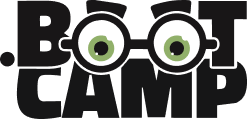In recent years, the educational landscape has changed dramatically, mainly due to technological advancements and global events like the COVID-19 pandemic. As a result, hybrid learning—where some students attend in person and others join virtually—has gained significant traction. However, effectively managing a hybrid classroom is easier said than done. To make the experience seamless and interactive, educators are relying increasingly on various teaching tools. In this article, we’ll explore some indispensable tools that can help enhance the hybrid learning experience for both teachers and students.
Virtual Classroom Platforms: The Foundation of Hybrid Learning
Firstly, and most importantly, choosing the right virtual classroom platform lays the foundation for a successful hybrid learning setup. Examples like Zoom, Microsoft Teams, and Google Meet offer a range of features that include breakout rooms, whiteboards, and real-time assessments. Notably, these platforms are essential for creating a unified class environment. With proper video and audio quality, these platforms ensure that students joining virtually do not miss out on any educational content.
Learning Management Systems (LMS): Organize, Track, Evaluate
Secondly, Learning Management Systems such as Moodle, Canvas, and Blackboard offer comprehensive solutions for course management. Not only do they provide a centralized location for resources and assignments, but they also help in monitoring student engagement and performance. In addition, educators can upload interactive videos, quizzes, and discussion forums to keep the learning ongoing outside of regular class hours.
Interactive Whiteboards: Collaborative Learning Redefined
Thirdly, the use of interactive whiteboards like Jamboard or Miro adds a whole new level of engagement to a hybrid classroom. With these tools, teachers can scribble notes, draw diagrams, and even invite students to collaborate in real-time. Additionally, these whiteboards can integrate seamlessly with virtual classroom platforms, allowing remote students to participate as if they were physically present.
Polls and Quizzes: Active Learning at Its Best
Moreover, conducting live polls and quizzes can boost active participation from both in-person and remote students. Tools like Poll Everywhere, Kahoot!, and Socrative enable educators to create interactive, real-time polls and quizzes. These instruments can serve multiple purposes: they can gauge understanding, break the monotony, and keep students engaged. Furthermore, instant feedback helps teachers to adjust their teaching strategies on the fly.
Breakout Rooms: Foster Group Work and Discussions
Certainly, one of the challenges in a hybrid learning environment is to engage students in group activities. Breakout rooms in virtual classroom platforms can effectively solve this issue. Teachers can easily assign students to different rooms for group discussions or collaborative projects. After the activity, students can then rejoin the main classroom, both virtually and physically, to share their findings.
Digital Assessment Tools: Making Evaluations Easier
Furthermore, digital assessment tools like Turnitin, Gradescope, and Edulastic make it convenient for teachers to evaluate assignments and exams. Beyond that, these tools also offer features for checking plagiarism, grading rubrics, and providing in-depth analytics. Moreover, they save valuable time that teachers can use to focus on planning lessons or giving extra attention to students who may be struggling.
Accessibility Tools: Ensuring No One is Left Behind
Inclusivity is a critical aspect of any educational setting, including hybrid classrooms. Tools like Google’s Read & Write, Microsoft’s Immersive Reader, and text-to-speech functions can make content more accessible. Above all, they assist students who might have reading difficulties or special needs to better engage with the material.
Teacher Training: An Often Overlooked Aspect
Finally, none of these tools will be effective unless teachers are well-trained to use them. Professional development courses and workshops on mastering these technologies can greatly help in this regard. Consequently, school administrations should invest in teacher training to ensure that the tools are being used to their full potential.
To sum it all up, the integration of various teaching tools in a hybrid learning environment is not just a necessity but a game-changer. From virtual classroom platforms and Learning Management Systems to interactive whiteboards and digital assessment tools, each serves a unique purpose in enriching the educational experience. Additionally, the role of teacher training in effective tool utilization can’t be stressed enough.
Conclusively, as we move further into the digital age, these teaching tools will continue to evolve, offering even more powerful features for hybrid learning. Therefore, educators should stay updated on the latest tools and be open to adopting them, as they can significantly impact how well students learn and engage.

